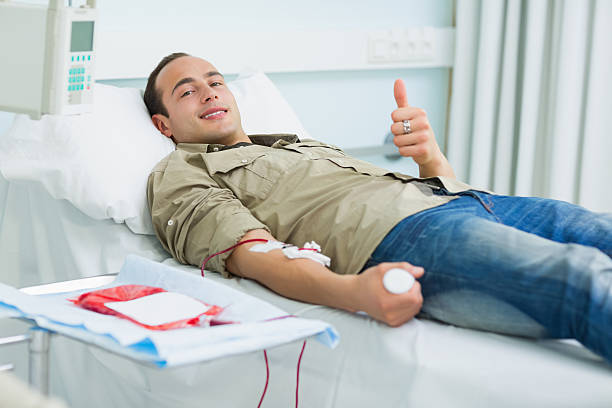Understanding the O+ Blood Group: Who Can They Donate To?
The O+ blood group is one of the most common blood types worldwide. Characterized by the presence of the Rh factor, O+ blood is known for its versatility and compatibility, making it a crucial component in blood donation and transfusion networks. This article delves into the specifics of who can receive blood from an O+ donor, the science behind blood compatibility, and the vital role of O+ donors in the medical community.
The Basics of Blood Groups
To comprehend the significance of the O+ blood group, it's essential to understand the basics of blood groups. Human blood is classified into four primary types based on the presence or absence of specific antigens on the surface of red blood cells. These antigens are proteins that can trigger an immune response if they are foreign to the body. The four main blood groups are A, B, AB, and O.
Each of these groups can be further classified based on the presence of the Rh factor, another antigen. If the Rh factor is present, the blood type is positive (e.g., A+, B+, AB+, O+). If the Rh factor is absent, the blood type is negative (e.g., A-, B-, AB-, O-).
The Unique Characteristics of O+ Blood
O+ blood is unique because it lacks A and B antigens but contains the Rh antigen. This makes it a highly sought-after blood type for transfusions. Approximately 37.4% of the global population has O+ blood, making it the most common blood type. The high prevalence of O+ blood means that it is often in high demand for blood transfusions.
Compatibility and Transfusion
Blood compatibility is a critical factor in blood transfusions. When blood from a donor is transfused into a recipient, the recipient's immune system can recognize the donor's blood as foreign and mount an immune response if the blood types are incompatible. This immune response can cause serious complications, including hemolysis (destruction of red blood cells), kidney failure, and even death.
Who Can Receive O+ Blood?
One of the key benefits of O+ blood is its versatility in transfusions. Because it lacks A and B antigens, O+ blood can be safely given to individuals with A+, B+, AB+, and O+ blood types. This makes O+ blood donors highly valuable in emergency situations and for patients with unknown blood types.
O+ Blood for O+ Recipients
Individuals with O+ blood can safely receive blood from O+ donors. Since they share the same blood type, there is no risk of an immune response against the donor blood. This compatibility ensures that O+ recipients can receive transfusions without complications.
O+ Blood for A+, B+, and AB+ Recipients
O+ blood can also be given to recipients with A+, B+, and AB+ blood types. Although these recipients have different blood types, they share the Rh factor with O+ blood, which prevents an immune response against the Rh antigen. The absence of A and B antigens in O+ blood means that it will not trigger an immune response against these antigens in A+, B+, and AB+ recipients.
The Role of O+ Donors in the Medical Community
O+ blood donors play a crucial role in the medical community. Their blood is in high demand for a variety of reasons, including emergency situations, surgeries, and for patients with certain medical conditions.
Emergency Situations
In emergency situations, there is often no time to determine a patient's blood type. In these cases, O+ blood is frequently used because of its broad compatibility with other positive blood types. This can be lifesaving in trauma cases, accidents, and other urgent medical situations.
Surgeries
During surgeries, especially major operations, there is a risk of significant blood loss. Having a readily available supply of O+ blood can be critical for the success of the surgery and the patient's recovery. Surgeons and medical teams often rely on O+ blood to ensure that they can manage blood loss and keep patients stable during procedures.
Medical Conditions
Certain medical conditions, such as anemia, cancer, and blood disorders, require regular blood transfusions. Patients with these conditions often depend on donations from O+ blood donors to maintain their health and manage their symptoms. The ability of O+ blood to be safely transfused to a variety of blood types makes it an invaluable resource in the treatment of these conditions.
Encouraging O+ Blood Donations
Given the high demand for O+ blood, encouraging donations from individuals with this blood type is essential. Blood banks and donation centers often run targeted campaigns to recruit O+ donors, highlighting the importance of their contributions and the lives they can save.
The Donation Process
Donating blood is a simple and safe process. Potential donors undergo a brief health screening to ensure they are eligible to donate. The actual donation typically takes about 10-15 minutes, during which approximately one pint of blood is collected. After donating, individuals are provided with refreshments and monitored for a short period to ensure they feel well before leaving.
The Impact of a Single Donation
A single blood donation can save up to three lives. This is because the donated blood can be separated into its components—red blood cells, plasma, and platelets—each of which can be used to treat different patients and medical conditions. For O+ donors, this means that their contribution can have a profound and far-reaching impact on the health and well-being of others.
The Future of Blood Donation
The field of blood donation is continually evolving, with advancements in technology and medical practices enhancing the efficiency and effectiveness of the donation process. Innovations such as pathogen reduction techniques, improved storage methods, and the development of artificial blood substitutes hold promise for the future of blood transfusions and donation.
Pathogen Reduction Techniques
One of the challenges in blood donation is ensuring the safety of the donated blood. Pathogen reduction techniques aim to eliminate the risk of infections transmitted through blood transfusions. These techniques involve treating the blood with chemicals or light to inactivate viruses, bacteria, and other pathogens. By making the blood supply safer, these advancements can increase the availability and reliability of O+ blood donations.
Improved Storage Methods
The storage of donated blood is another critical area of focus. Blood products have a limited shelf life, and ensuring that they remain viable and effective for as long as possible is essential. Advances in storage methods, such as the use of specialized preservatives and refrigeration techniques, can extend the shelf life of blood products and reduce waste. This means that O+ blood donations can be stored and utilized more efficiently, maximizing their impact.
Artificial Blood Substitutes
While artificial blood substitutes are still in the experimental stage, they hold great potential for the future of transfusions. These substitutes aim to mimic the oxygen-carrying capacity of red blood cells, providing a temporary solution when donor blood is not available. Although they are not yet a replacement for natural blood, ongoing research and development in this area could revolutionize the field of blood transfusions and reduce the dependence on human donors.
Conclusion
The O+ blood group is a cornerstone of blood donation and transfusion practices. Its compatibility with multiple blood types makes it an invaluable resource in medical emergencies, surgeries, and the treatment of various medical conditions. Encouraging O+ blood donations and supporting advancements in blood storage and safety are essential for maintaining a robust and reliable blood supply.
O+ blood donors are true heroes, their contributions saving countless lives and improving the health and well-being of patients around the world. By understanding the importance of O+ blood and the impact of donations, individuals can be inspired to contribute to this lifesaving effort. As medical science continues to advance, the future of blood donation holds great promise, with innovations that will enhance the safety, efficiency, and availability of blood products for all who need them.



